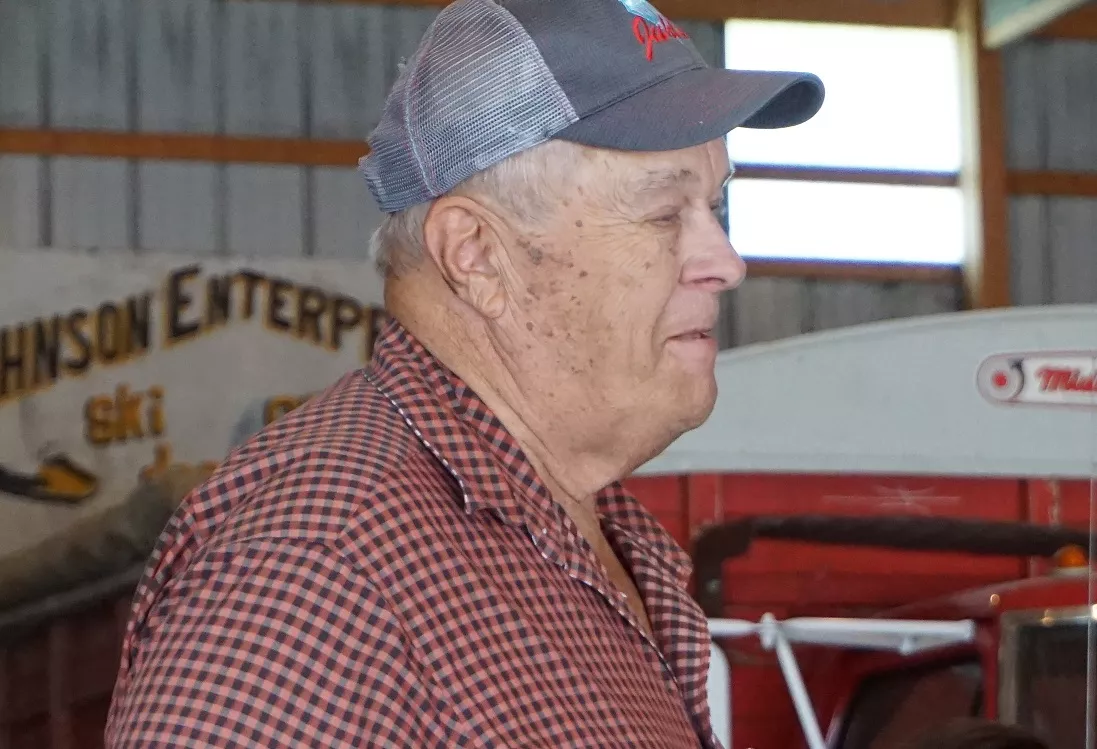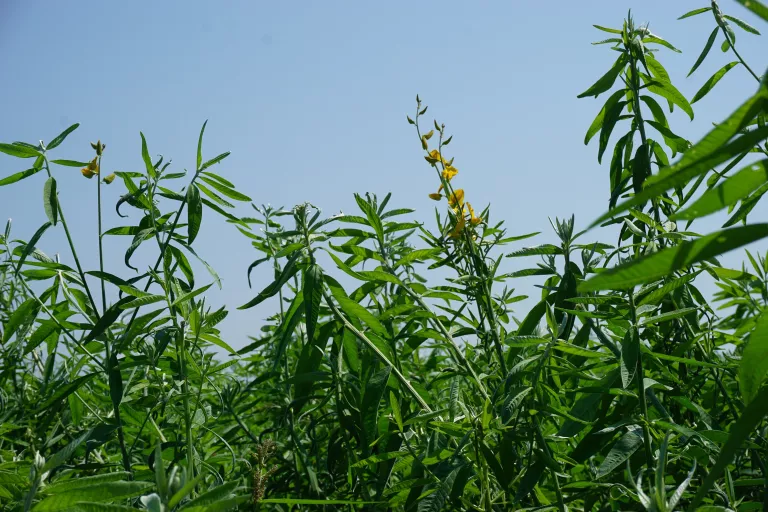Landowner Describes Challenges of Raising Crops in Pipeline Easement – Demonstrates a Solution During Field Day
by Pam Mackey Taylor
In 2017, the first year after the Dakota Access pipeline was built, LaVerne Johnson tried to raise soybeans. He was unsuccessful. The plants did not grow well. They did not set pods. Ultimately the crop had no commercial value.
Frustrated, Johnson sought the advice of Dr. Michael McNeill, a soil scientist from Algona. McNeill and his staff began measuring microbes, yeast, soil fertility, and compaction in the easement. They also collected measurements in areas outside of the easements. McNeill’s results show significant decline in soil health in samples from the easement, as compared to samples outside of the easement.

Tests showed significant compaction of the soils in the pipeline easement. Compaction is the compression of soil particles which reduces the ability of the soil to hold water and air. Compaction also impedes the ability of roots to penetrate the soil. Compaction is caused by running machinery over the soil. Compaction is made worse when machinery is run over wet soils.
Johnson attempted to run de-compaction equipment over the easement. The compaction was so severe in spots that the machine would not work through the compaction. The compaction on Johnson’s property was compounded by the mixing of soil layers. The soil layers were not adequately separated and returned during the trench digging and backfilling stages of the pipeline construction. Further, the contractors working on the Dakota Access pipeline had to use a dewatering process that was intended to remove water from the trench. The process resulted in clay-contaminated water being put on top of a crop field outside of the easement, with the net result that the topsoil was buried in clay.
In 2018, facing poor options for raising a crop on the easement, Johnson consulted with Dr. McNeill about what he could do. McNeill recommended growing sunn hemp. Sunn hemp is planted in the spring. Then it is tilled under 60 to 70 days after it was planted. The plant fixes nitrogen while it is growing. Then it provides natural fertilizer, which is also called green manure, as it is plowed into the soil. Sunn hemp is a legume that is native to India. Sunn hemp is not cannabis, is not the same as industrial hemp, and is not marijuana.
Once the sunn hemp is plowed under, oats and peas will be planted on the land. That crop will not be harvested this year, but will serve as a cover crop.
Johnson is not alone with struggles on trying to successfully grow a crop on the Dakota Access pipeline easement and engaging in efforts to restore the easement to the fully productive levels experienced before the pipeline was constructed. That is why he opened his farm to a field day on August 17 and invited landowners to share their experiences of attempting to restore their land to productivity after the pipeline construction. Originally the field day was to include plowing the sunn hemp into the ground with antique farm machinery. Unfortunately rains over the previous days left the easement too wet to run farm machinery over the land and Mr. Johnson did not want to add to the compaction created by Dakota Access and its contractors.

Something went terribly wrong with the Dakota Access construction and inspection process. An Agriculture Impact Mitigation Plan was designed by Dakota Access, and approved by the Iowa Utilities Board, to guide the construction work on farm fields and the requirements to return the land to a productive state. The Agriculture Impact Mitigation Plan was not followed. Landowners have been left with very degraded soil on the easements.
Each county hosting the pipeline hired an inspector who was to work with Dakota Access to insure that construction did not happen during wet conditions, to inspect dewatering, and inspect the return of the soil layers to the trenches. Counties spent millions of dollars, which was reimbursed by Dakota Access, doing this inspection. Counties were continuing to engage the inspectors throughout the summer of 2018. As of May, 2018, the following amounts were spent by each county on inspectors:
County - amount paid for inspectors
Boone - $708,629.88
Buena Vista - $762,388.12
Calhoun - $850,418.89
Cherokee - $501,129.30
Jasper - $930,786.88
Jefferson - $430,033.29
Keokuk - $165,848.00
Lee - $1,013,337.97
Lyon - $152,150.64
Mahaska - $897,948.61
O'Brien – $302,504.73
Polk - $21,777.47
Sioux – $910,299.69
Story - $400,275.61
Van Buren – $388,724.17
Wapello - $315,668.70
Webster – $540,170.40
Total - $9,292,092.35
(This information was provided by the County Auditors in each county, in response to an Open Records request.)
After all of the money spent on inspectors, the landowners are trying to put Humpty Dumpty back together again – while they are dealing with compaction, loss of soil fertility, and drainage issues.
For more details, link to a spreadsheet detailing the money Dakota Access paid the inspectors, paid the counties for permits and grants, and paid for easements across public land.